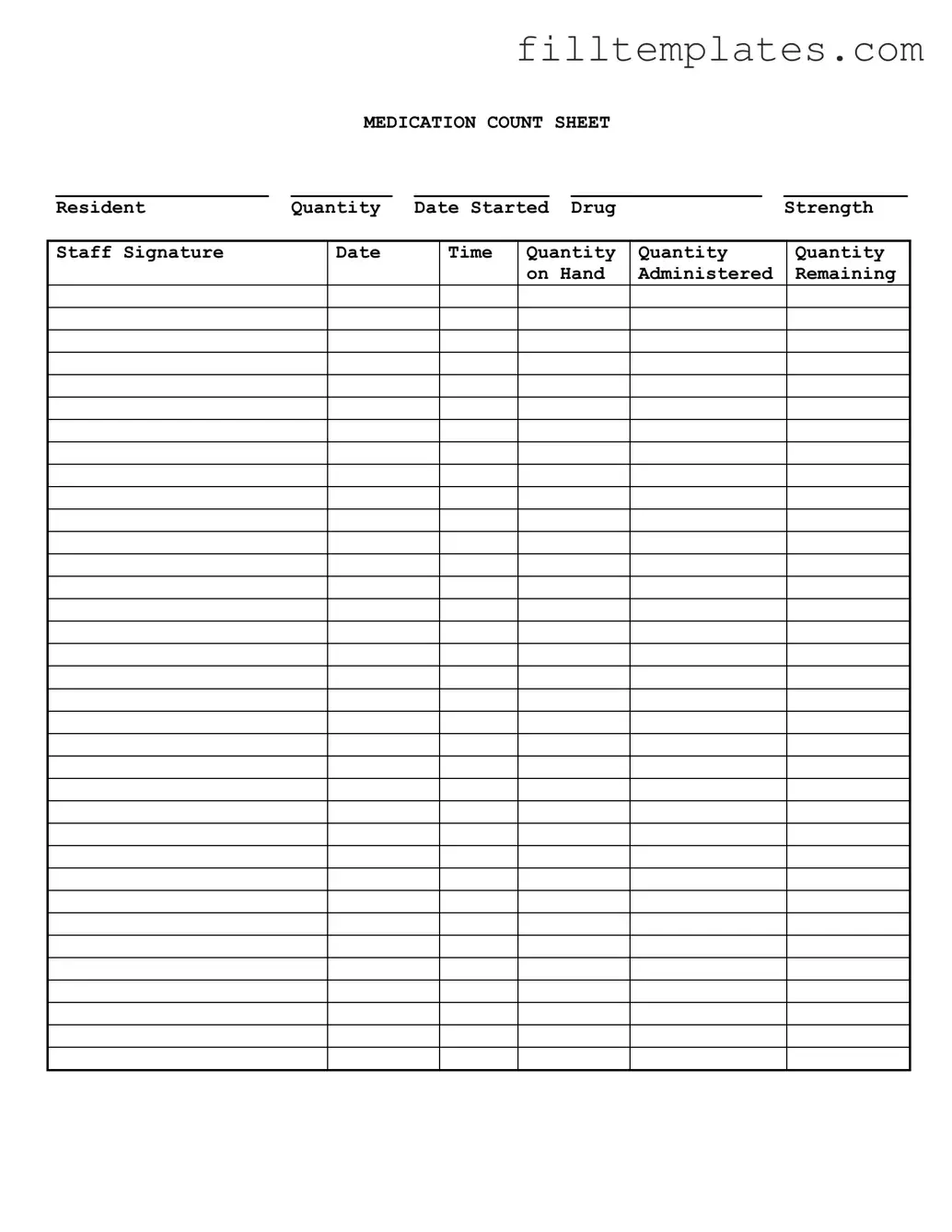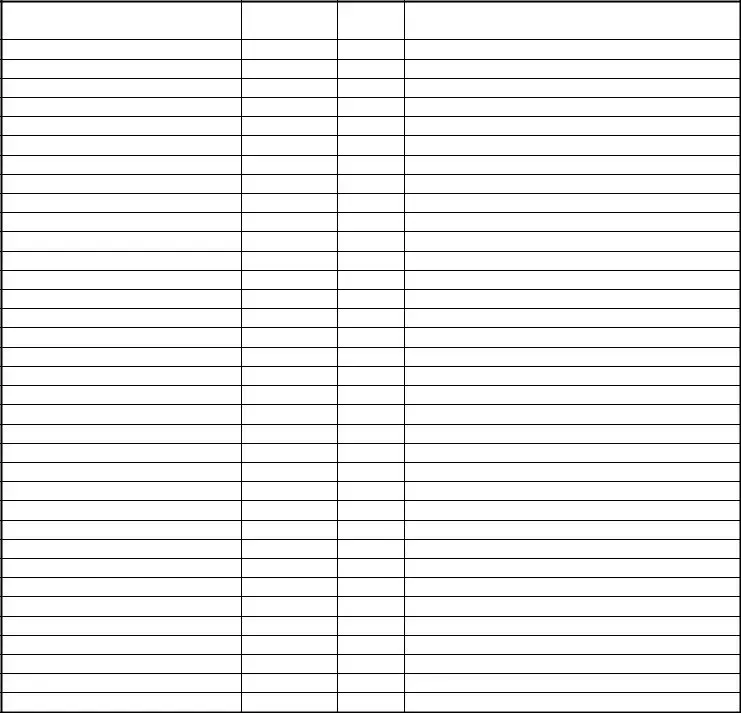Download Medication Count Sheet Template
The Medication Count Sheet is a crucial document used to track the administration and inventory of medications for residents in healthcare facilities. It includes details such as the resident's name, drug strength, quantities administered, and remaining amounts. Accurate completion of this form helps ensure proper medication management and compliance with health regulations.
Open Medication Count Sheet Editor

